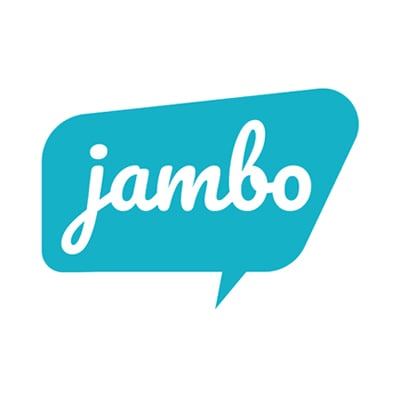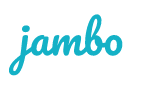
Effective stakeholder engagement requires you to build positive stakeholder relationships where everyone involved feels like they've been heard, respected and considered throughout the process (even if they don't get the outcome desired). A key part of building positive stakeholder relationships is ensuring your engagement is as inclusive as possible. If your stakeholder engagement process isn't inclusive, there might be barriers that limit your stakeholder's ability to effectively engage with your organization, which can negatively impact your project's success.
In today's blog, we'll share tips on how to begin making your stakeholder engagement plan more inclusive.
1. Include the right people
One of the first steps to making your stakeholder engagement plan more inclusive is ensuring that you include everyone who needs to be included. While there might be certain groups you instinctively know must be included, you and your team must take time to brainstorm all the possible stakeholders, communities and groups who might need to be engaged. You can do this stakeholder identification step through a stakeholder mapping exercise.
In a stakeholder mapping exercise, you take a close look at your stakeholders by identifying them and then prioritizing them according to their levels of interest and influence in your project. Stakeholder mapping helps you learn about your stakeholders, which allows you to better understand who you need to communicate with and in what ways.
To learn how to do a stakeholder mapping exercise, check out our blog on the topic!
2. Thoughtfully choose how you'll communicate
Once you've identified your stakeholders and communities, you need to consider what communication tactics you'll use (e.g., email, town halls, face-to-face meetings, brochures, etc.) and what messages you'll include. This step is vital because not everyone communicates the same, so understanding how your stakeholders and communities prefer to communicate is critical. Some may like email or traditional mail, while others may prefer meeting in person or even a simple phone call. It’s important to remember that there could be multiple reasons for their preference, such as unreliable Internet access, convenience, or even just general comfort and trust.
While you might not initially understand how your stakeholders and communities prefer to communicate, once you begin engaging, you'll learn more about your stakeholder's preferences and can adjust your tactics as necessary.
Need tips for emailing stakeholders? Visit our blog!
Tip to keep track of your stakeholder's preferences
To learn more about Stakeholder Relationship Management (SRM) software, check out our comprehensive guide!
.png?width=600&height=300&name=Copy%20of%20Untitled%20Design%20(1).png)
3. Choose accessible locations
Chances are, you'll be meeting with some of your stakeholders throughout your engagement efforts, so ensure you take the time to select meeting locations thoughtfully.
For example, if you're hosting a town hall, consider:
- Is there ample parking?
- Are there accessible facilities?
- Elevators if attendees need access to floors on different levels.
- Accessible washrooms.
- Accessible parking spaces.
- If there are stairs, ensure there are ramps.
You want to take the time to ensure that your stakeholders can access the location as comfortably as possible and remove any barriers to their attendance and participation. This is important because taking the time to ensure your stakeholders feel included and respected by your organization will go a long way towards building vital stakeholder trust.
Additionally, if you're hosting in-person events or meetings, consider adding an online participation option, such as a web meeting, for those who can't make it in person or aren't comfortable with your chosen location.
4. Use language carefully
Making language inclusive can include many elements like:
- Avoiding acronyms
- Replacing technical jargon with simple language
- Not assuming you know what your audience is thinking (ensure there's space for your audience to ask questions and add comments)
Kim Hyshka discusses this in our Ask the Expert: 5 New Trends and Best Practices in Stakeholder Engagement blog when she teaches readers the importance of creating a positive stakeholder experience. When it comes to the intellectual experience, Kim asks readers, "can people understand what you're saying? For example, if they're feeling confused (e.g. from a lot of technical jargon), they're likely walking away frustrated." To avoid this breakdown in communication, ensure the language you're using is understandable and make sure there’s a clear way for your stakeholders to ask questions and add comments.
Additionally, consider hiring a translator when appropriate.
Align your inclusive engagement efforts with your organization's sustainability goals
Another part of inclusive engagement is ensuring that your efforts align with your organization's sustainability goals and policies. Having the ability to report on and share your efforts will help you meet regulatory requirements and build trust with your stakeholders and communities, increasing project buy-in and stakeholders' willingness to work with you again in the future.
Tip to keep track of your inclusive engagement efforts for sustainability reporting
Stakeholder Relationship Management (SRM) software can help you keep detailed records of the actions you've taken towards your sustainability plans through features like task management and concise and detailed reporting options.
To learn more about how stakeholder engagement can help you align with your ESG and Sustainability Strategy, check out our blog!
Be open to feedback
Beyond focusing on our own messaging in stakeholder engagement, it's equally important to hear from our stakeholders and learn from their valuable insights.
As you engage, you'll learn what works for your stakeholders and what else they'd like to see from you on your inclusive engagement journey. Make sure you have ways for your stakeholders to communicate their feedback with you to strengthen your stakeholder engagement plans, sustainability strategies and stakeholder relationships.
Additionally, make sure you circle back to the people you've spoken with and let them know updates. Even if their suggestions didn't make it into the final plan, consistent and informative communication is a critical part of successful and inclusive stakeholder engagement.
Make sense of the stakeholder information you collect
As you continue with your stakeholder engagement plan, you'll be collecting a lot of stakeholder information and making sense of this information is critical for the success of your stakeholder engagement efforts. The best way to organize and streamline your stakeholder management efforts is with Stakeholder Relationship Management (SRM) software. An SRM will help your team to simplify the reporting process, gain a clearer understanding of your stakeholders and build positive stakeholder relationships for better project outcomes.
To see our SRM, Jambo, book a 15-minute discovery call with a Jambo expert!








